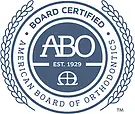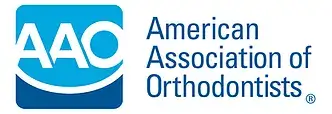Have you ever thought about the best braces for your child? There are many orthodontic options today. It’s exciting but also a tough choice.
Choosing braces for kids is important. It affects their oral health and confidence. Parents can choose from many types, like metal, ceramic, Invisalign, and more. The choice depends on the child’s teeth, care habits, if they want the braces to show, and budget.
Traditional braces work well for serious cases and are cost-effective. Invisalign is great for teens as it’s nearly invisible and comfortable. It’s key to know the pros and cons of each. This way, you’ll make a choice that makes your child happy and maintains their self-confidence.
Key Takeaways
- Choosing the right braces impacts a child’s oral health and confidence.
- Options include traditional metal, ceramic, self-ligating, mini braces, and Invisalign.
- Traditional braces are effective for severe misalignments and are budget-friendly.
- Invisalign offers comfort and less visibility, ideal for older children and teens.
- Decisions should consider misalignment severity, oral care habits, and cosmetic preferences.
Introduction to Braces for Kids
Braces are a big step in making sure your child has their best children’s dental health. They help to line up the teeth and jaws well. Now, braces are better than before, so they’re more comfortable and look nicer. Choosing braces for your child involves looking at how well they work, how long they last, and how they’ll affect your child’s look.
Getting braces often happens when kids become teenagers. It shows they’re serious about having a healthy mouth and a better life. Understanding what’s ahead and what to expect with braces is very important. Braces do more than make your teeth straight. They can make your child feel more confident by improving how their smile looks.
Today, braces are made to be extra comfy and do a great job. You can pick from traditional metal braces to newer ones like Invisalign. Every choice meets different needs and tastes. For parents, knowing about braces early is key. It helps set up your child for a successful time with braces. This way, they can enjoy a healthy smile that’s well-aligned.
Traditional Metal Braces
Traditional metal braces have been a go-to for effective braces treatment. They’re known for their metal brackets and archwires. These braces are quite strong and don’t cost as much over time, which is good for families tackling big dental problems. Kids can also enjoy choosing colorful rubber bands to make them more fun.
However, metal braces do have some downsides. They mean following food rules to keep them from breaking. Plus, regular trips for orthodontic care are a must to look after them. But, new tech has made these braces more comfy and a bit less obvious. All this is great news for youngsters just starting their braces journey.
So, while they have their pros and cons, traditional metal braces are still a key part of dental work. They do a great job of fixing all kinds of problems with how our teeth line up.
Ceramic Braces
Ceramic braces come with clear or tooth-colored brackets, which look really discreet. They are a great option for those looking for a brace that’s not very visible. This makes them perfect for older kids and teens who care about how they look.
Clear braces match the color of your teeth really well. But they are bigger and more likely to break. They can also get stains easily, so taking good care of them is crucial.
So, ceramic braces are a mix of being useful and looking good. They are an excellent choice for people who don’t want metal braces to stand out. Still, you should remember they are a bit delicate and need careful attention to keep them looking and working well.
Self-Ligating Braces
Self-ligating braces are a new way in advanced orthodontia. They use bracket clips to hold the archwires instead of rubber bands. This clip system cuts down on friction. So, teeth can adjust more easily and treatment time can decrease. Patients also may need to visit the dentist less often.
These braces are known for being very comfortable. With less friction, there’s less pain and not as much plaque build-up. But, people who wear them still need to watch what they eat.
Overall, self-ligating braces offer a good middle ground. They combine effectiveness with low maintenance. This approach is a big step forward in frictionless braces. It helps people get straighter teeth faster and with less hassle.
Mini Braces vs. Traditional Braces
In orthodontics, people often choose between mini braces and traditional ones considering size and comfort. The advent of smaller brace designs has made them more popular. These small braces are less noticeable but work just as well as traditional braces. They make orthodontic treatment more comfortable.
Mini braces require the same care as regular metal braces. They are perfect for kids who want braces that are not so obvious. Parents and kids looking for a comfortable orthodontic option choose these. They offer the same benefits as regular braces. The use of modern designs has made mini braces especially popular among young people.
Mini braces are sleek and less visible, making kids more willing to wear them. This leads to better follow-through with treatment, which improves the orthodontic experience. Evidently, mini braces are often preferred over traditional braces. They offer a good mix of comfort and effective dental care.
Invisalign for Kids
Invisalign is popular for its clear, nearly invisible aligners. They straighten teeth well, without the bulky metal braces. Teens love them for how they look and how they work. The aligners get changed every two weeks to move the teeth little by little. This makes them a cool and easy choice for fixing smiles.
Using Invisalign is super convenient. Kids don’t need to worry about what they eat. They can remove the aligners to enjoy any food without fear of breakage. Plus, keeping teeth clean is a breeze. Brushing and flossing are simple since the braces come off.
But, not everyone can use Invisalign. It’s best for fixing mild to moderate tooth problems. The child must wear the aligners for 22 hours each day. This is key to how well Invisalign works. So, it needs a kid who’s ready to be responsible about wearing them.
What is the best type of braces for kids?
Choosing the right braces for kids means looking at several things. This includes how bad their teeth are, if they care about looks, and how they live. Each kind of braces helps with these differently. Parents need to think hard about these to make a good choice.
Finding out what your child needs is key. Traditional braces, mini braces, and self-ligating braces are often suggested. They work well and don’t cost too much. Traditional and mini braces fix big dental problems well. Self-ligating braces make it easier to move teeth because they have special clips.
If looks are important, ceramic braces or Invisalign might be better. Ceramic braces have brackets that are clear or the color of teeth. They’re not as easy to see. Invisalign is hard to see and can be taken out. But, a child must be good about wearing them all the time for the best outcome. So, it’s key to think carefully to ensure the treatment works well and is comfortable for your child.
Finally, the best way to pick braces is with an orthodontist’s help. They will give the best advice. They make sure the chosen braces fit your child’s needs and life. This helps your child have a healthier and more confident smile.
Conclusion
Choosing the right braces for a child mixes practical thinking with what they like. There are many types from metal to Invisalign, each with pros and cons. They all aim to improve your child’s smile, health, and confidence.
Talking to an expert orthodontist is really important. They’ll give a full check and advice specific to your child. This approach helps families choose wisely, making treatment effective and less stressful for the child.
The best braces depend on what suits your child’s needs and lifestyle. Options include traditional braces, clear aligners, and more. The correct pick leads to a beautiful smile and good dental health for your child.









